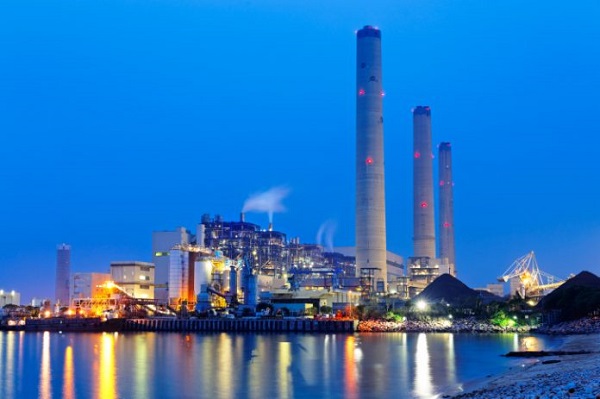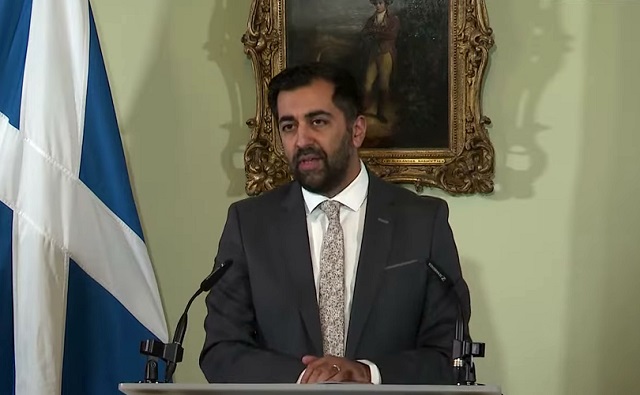Energy
What doubling the grid really means

From the Frontier Centre for Public Policy
” imagine if someone said in the next 25 years and 11 months, we must twin every single freeway, highway, grid road, street and alleyway, across the entire country, at the same time. And along the way, we have to replace up to 89 per cent of the existing infrastructure, as well, because it is no longer considered adequate “
Recently my daughter called me while on her way back from a Costco run in Regina, heading home to Weyburn.
She noted that it appears they are twinning the highway between Regina and Weyburn. Indeed, they are, I explained. And several years later, they’ll probably get it all the way to Weyburn. Maybe by the time I retire, if I live that long, they’ll get as far as Estevan.
Indeed, those timelines are likely pretty close to reality, if the twinning of Highway 16, from Saskatoon to Lloydminster, was any indication. I used to drive from Saskatoon to North Battleford to get the newspaper I was working for printed, with road construction for much of that. And it took several more years to complete the Battlefords to Lloydminster portion. I was fortunate enough to be present at the ceremony for that. It was significant enough that Premier Lorne Calvert came out.
Twinning a major highway is a substantial undertaking. Historically, Saskatchewan could usually only afford to work on three separate areas at a time, typically doing 20 kilometres per year in each stretch. That was all the provincial finances could handle.
By adding an additional two lanes, you are effectively doubling the capacity of that major piece of infrastructure. It’s not easy, not cheap, and not fast.
Now imagine if someone said in the next 25 years and 11 months, we must twin every single freeway, highway, grid road, street and alleyway, across the entire country, at the same time. And along the way, we have to replace up to 89 per cent of the existing infrastructure, as well, because it is no longer considered adequate.
You’d probably think they were living in a dreamland, or quite possibly stark raving mad.
And yet this is precisely what the federal government is proposing, nay, demanding, of Canadians from St. Johns to Victoria to Tuktoyaktuk.
In order to save the world from anthropogenic (manmade climate change) and attain a “Net Zero by 2050” economy, we must increase the size of the electrical grid by a factor of 2.5x. And for Saskatchewan and Alberta, who on any given day get up to 88 and 94 per cent of their power, respectively, from fossil fuels, they must also replace that existing gas and coal power generation with non-emitting sources, at the same time as they’re building out the truly massive expansion.
The first reference I saw of the federal Liberal government’s intentions of this was in the 2023 budget, which noted expanding the electrical grid by a factor of 2.2 to 3.4 times. By August, when they released the proposed Clean Electricity Regulations, the government seemed to settle on a factor of 2.5 times for the high demand scenario.
So in the highway twinning example, that would be adding three lanes, not two, to every two lane highway, grid road, street and alleyway. For an existing four lane highway, you would need to add six lanes. For a six lane freeway like Ontario’s 401, you’d need to add an additional nine lanes, finding the right of way space, concrete, rebar, gravel, and asphalt for all of this. Again, all at the same time, in 25 years and 11 months.
There are several thrusts that the federal government is pushing. First, by 2035, they want to totally eliminate gasoline and diesel from new light vehicle sales. There’s currently only eight retail hydrogen fueling stations listed by the federal government and Shell in the entire country. There could be more, but they’re not listed. Realistically this means battery-powered electric vehicles (EVs). But nearly all of those EVs will require charging at home each night (and especially during winter, pre-conditioning those batteries, keeping them warm).
So every residence in the country will require 30 amp chargers for cars, and 80 amp chargers for pickups.
But the government is also now moving away from fossil fuels for home, heating, too. This was indicative of Prime Minister Justin Trudeau’s pause on the carbon tax for home heating oil (primarily used in Atlantic Canada, although I grew up in a house with that system). To do so, the feds are offering “free” installations of heat pumps (which are wholly inadequate at -30 temperatures, let alone the -44 seen in Alberta in mid-January). And those could be up to another 50 amps, per heat pump.
And that’s just residential, never mind commercial or industrial.
The Clean Electricity Regulations are meant to force fossil fuel power generation to go away. And since wind frequently drops to nothing, and the sun goes down every day, the only real alternative is massive expansion of nuclear power across Canada. We’re talking small modular reactors by the dozen in Alberta, Saskatchewan, and to a lesser extent, Nova Scotia and New Brunswick.
On Jan. 30, SaskPower announced a formalized agreement with General Electric-Hitachi for small modular reactors. But when I asked how many they plan on building, the CEO wouldn’t say. But he did speak of increasing the provincial grid from 5,400 megawatt now to 13,000 to 15,000 megawatts.
Hydro Quebec just released their plans to double their grid. Yet, perhaps miraculously, they’re not saying how many, if any, new dams will need to be built.
This doubling of the grid (actually 2.5x, but that’s not easy to say), means we’re going to need not only additional generation, but transmission lines, distribution lines, back alley pedestals, and wiring to every home, business and factory in the country. Where the materials come from? The contractors and workers? Will Not In My Back Yard (NIMBY) be universally trampled on by eminent domain orders, for the good of the planet? Or will it be a continuation of Build Absolutely Nothing Anywhere Near Anything Syndrome (BANANAS)?
A very real example is the Trans Mountain Pipeline. The original was built in something like 16 months, from scratching dirt to oil flowing. The expansion is taking a hell of a lot longer. Work started in 2018, and it is still not done. Any change in the plan had to go back to the Canadian Energy Regulator. Some First Nations fought it every step of the way.
Now do this for every single piece of existing power infrastructure. Wrap your head around that for a minute.
This supposed energy transition, from fossil fuels to electric everything, does not work if you cannot build out the electrical infrastructure, everywhere, and essentially all at in the next 25 years and 11 months. Either the timelines need to be stretched to a generational scale, or more realistically, the whole concept needs to be entirely rethought.
As Saskatchewan Premier Scott Moe has said more than once, “We will not attempt the impossible when it comes to power production.”
Brian Zinchuk is editor and owner of Pipeline Online, and occasional contributor to the Frontier Centre for Public Policy. He can be reached at [email protected].
Energy
Fresh Off Their Major Victory On Gas Export Terminals, Enviros Set Sights On New Target: Oil Exports

 From the Daily Caller News Foundation
From the Daily Caller News Foundation
By NICK POPE
Months after President Joe Biden handed environmentalists a major win by pausing new liquefied natural gas (LNG) export terminals, activist groups are beginning to turn their attention to deepwater oil export hubs.
A coalition of 19 climate activist organizations — including the Sierra Club, Earthjustice and the Sunrise Movement’s New Orleans chapter — wrote a Thursday letter to Biden, Transportation Secretary Pete Buttigieg and Maritime Administration Administrator Adm. Ann Phillips urging the administration to halt approvals of proposed deepwater crude oil export facilities. The letter signals that the environmental lobby is turning its attention to a new target after the White House opted to pause new LNG export hub approvals in January following a considerable activist campaign.
“The undersigned urge the White House and Department of Transportation (DOT) to halt and reevaluate its licensing review of proposed deepwater crude oil export facilities to update and ensure the validity of the agency’s “national interest” determinations and related Deepwater Port Act (DWPA) project review,” the activist groups wrote. “The licensing of massive deepwater crude oil exports leads to disastrous climate-disrupting pollution and environmental injustices and would lock in decades of fossil fuel dependence that undercut the pathway to a clean energy economy.”
Oil Export Terminals Letter by Nick Pope on Scribd
“At minimum, we ask the Administration to update its outdated analysis under the DWPA and National Environmental Policy Act (NEPA) to address the harms generated by expansive oil exports on the climate, as well as consequences for environmental justice communities along the Gulf Coast, and for the national interest in energy sufficiency,” they continued.
American oil exports are “key” to global supply, especially in the wake of Russia’s invasion of Ukraine and the resulting changes in global energy markets, according to Bloomberg News. The U.S. became a net oil exporter in 2020 for the first time since 1949, according to the U.S. Energy Information Administration, and global oil demand is expected to grow through at least 2028, according to the International Energy Agency.
“It’s hard to call yourself a Climate President when more fossil fuels are being produced and exported by the U.S. than ever before,” James Hiatt, founder of For a Better Bayou, one of the letter’s signatories, said in a statement. “Approving massive oil export terminals in the Gulf of Mexico not only exacerbates our deadly fossil fuel addiction, but also blatantly disregards the health and wellbeing of environmental justice communities in the region. This administration is acting less like a beacon of hope and more like an enabler of dirty energy. It is time for a course correction towards real climate action.”
Biden handed environmental activists a huge victory when he paused approvals for new LNG export terminals in January, instructing his administration to closely examine the climate impacts of proposed facilities alongside economic and security considerations. The LNG pause stands as one of Biden’s biggest decisions on climate through his first term, and activists applauded the move while elected Republicans and the oil and gas industry have strongly opposed it.
Well-funded environmental organizations and young voters figure to be key bastions of support for Biden in the 2024 election cycle as he attempts to secure a second term in office and prevent the return of former President Donald Trump. While the Biden administration has spent more than $1 trillion and pushed stringent regulations to advance its sweeping climate agenda, most voters remain most concerned about the economy, inflation and immigration, with a much smaller share identifying climate change as the top issue facing the country, according to recent polling data.
Neither the White House nor the DOT responded immediately to requests for comment.
Energy
U.S. EPA Unveils Carbon Dioxide Regulations That Could End Coal and Natural Gas Power Generation

From Heartland Daily News
By ![]() Tim Benson
Tim Benson
The U.S. Environmental Protection Agency (EPA) announced new regulations on April 25 that would force coal-fired power plants to reduce or capture 90 percent of their carbon dioxide emissions by 2039, one year earlier than in the rule originally proposed in May 2023.
Other newly announced coal regulations include a final rule “strengthening and updating the Mercury and Air Toxics Standards (MATS) for coal-fired power plants, tightening the emissions standard for toxic metals by 67 percent, finalizing a 70 percent reduction in the emissions standard for mercury from existing lignite-fired sources,” and another rule to “reduce pollutants discharged through wastewater from coal-fired power plants by more than 660 million pounds per year.” The EPA also issued an additional rule to require the safe management of coal ash in locations not previously covered by federal regulations.
“Today, EPA is proud to make good on the Biden-Harris administration’s vision to tackle climate change and to protect all communities from pollution in our air, water, and in our neighborhoods,” said EPA Administrator Michael S. Regan. “By developing these standards in a clear, transparent, inclusive manner, EPA is cutting pollution while ensuring that power companies can make smart investments and continue to deliver reliable electricity for all Americans.”
EPA estimates its new regulations will reduce carbon dioxide emissions by 1.38 billion metric tons by 2047 and create $370 billion in “climate and public health net benefits” over the next twenty years.
Coal in a Regulatory Decline
Partially due to increasingly stringent regulations, electricity generation from coal has fallen from 52 percent of the nation’s total output in the 1990s to just 16.2 percent in 2023. Critics of the new regulations, including Jason Isaac, CEO of the American Energy Institute, argue that EPA’s new rules would make it impossible to open new coal plants and will effectively force those already online to shut down operations.
“These rules are a direct attack on an important and necessary source of American energy—one of our most affordable, reliable resources, and one that is essential here and growing in use around the world,” said Isaac. “The ignorance of this administration is negligent at best, criminal at worst, relegating the least among us to more expensive energy, or even none at all, as millions of Americans are finding out by having their electricity disconnected.
“On one hand they push to electrify everything and then with the other leave us with unreliable electricity,” Isaac said. “The Biden administration is hell bent on destroying coal and reaching new levels of recklessness.”
‘De Facto Ban’ on Coal
The new regulations almost assuredly will face legal challenges from the coal industry and others, says Steve Milloy, founder of JunkScience.com.
“Another unconstitutional EPA rule from the Biden regime that will be DOA at [the Supreme Court] but not until much harm has been caused,” said Milloy. “Congress has not authorized EPA to issue regulations that operate as a de facto ban on coal plants, yet that’s what this regulation amounts to because it mandates emissions control technology (i.e., carbon capture and sequestration) which does not, and will never, exist for coal plants.”
EPA, by contrast, says carbon capture and sequestration (CCS) is the “best system of emission reduction for the longest-running existing coal units” and a “cost-reasonable emission control technology that can be applied directly to power plants and can reduce 90 percent of carbon dioxide emissions from the plants.”
“The requirement for imaginary technology violates Clean Air Act notions of only requiring the best available and adequately tested technology,” Milloy said. “The de facto ban violates the 2022 [Supreme Court] decision in West Virginia v. EPA, which established the major questions doctrine, under which agencies cannot undertake significant new actions, like banning coal plants, without authorization from Congress.”
Natural Gas Targeted, Too
Coal plants were not the only target of new EPA regulations, as natural gas power plants are also now required to eliminate or capture 90 percent of their carbon dioxide emissions by 2032, three years earlier than called for when the draft rule was originally proposed in 2023.
The EPA is acting as if it has absolute power unconstrained by the law and prior court rulings, Darren Bakst, director of the Competitive Enterprise Institute’s Center on Energy & Environment, says in a press release.
“The [EPA] absurdly thinks its authority to regulate means it has the authority to shut down businesses,” said Bakst. “Establishing new regulations for power plants does not mean the agency can effectively force them out of business.
“This is Clean Power Plan Part II, but like with many sequels, it is worse,” Bakst said.
Tim Benson ([email protected]) is a senior policy analyst with Heartland Impact.
For more on the Biden administrations power regulations, click here.
-

 MAiD2 days ago
MAiD2 days agoEven Canadian leftists are starting to recognize the ‘dystopian’ nature of MAiD
-

 Censorship Industrial Complex2 days ago
Censorship Industrial Complex2 days agoElon Musk skewers Trudeau gov’t Online Harms bill as ‘insane’ for targeting speech retroactively
-

 Opinion1 day ago
Opinion1 day agoDoes Scottish gov’t turmoil signal the end of the ‘green’ agenda’s stranglehold on Europe?
-

 Energy1 day ago
Energy1 day agoFresh Off Their Major Victory On Gas Export Terminals, Enviros Set Sights On New Target: Oil Exports
-

 Alberta2 days ago
Alberta2 days agoParent and gender dysphoria groups granted intervenor status in New Brunswick school policy case
-

 Business1 day ago
Business1 day agoProposed changes to Canada’s Competition Act could kneecap our already faltering economy
-

 Business2 days ago
Business2 days agoEXCLUSIVE: US Is Failing To Counter Threat Of Chinese Land Ownership, Report Finds
-

 Agriculture12 hours ago
Agriculture12 hours agoFarming group accuses Canadian gov’t of trying to blame agriculture for ‘climate change’




